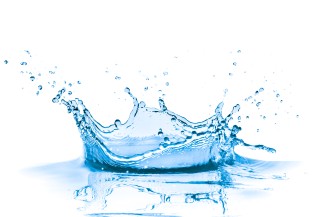How much energy does it take to fill a glass with drinking water? If you take into account the energy to transport the water from its source through the treatment and distribution process and into your faucet, there’s a lot of embedded energy that goes into that glass of water. And that’s not even getting into any energy used in the wastewater treatment process.
It’s a simple question, but a challenging one to answer. It’s valuable, though, for water utilities to better understand the embedded energy in their systems so they can reduce costs, improve energy efficiency, and quantify the avoided energy and pollution savings that accrue from water efficiency programs. And it’s all the more important with the exceptional drought spreading across the West.
ACEEE researched this topic in a white paper released last year, Watts in a Drop of Water: Savings at the Water-Energy Nexus, which gathered data from existing literature on energy savings associated with water savings. Today we’re releasing a new paper, A Survey of Energy Use in Water Companies, representing the next step in our research. The paper presents data we collected, in collaboration with the National Association of Water Companies (NAWC) , on the energy required to treat and distribute water. The data was collected through a survey to some of NAWC’s member companies.
The response was not as high as we hoped, but we received real-world data from a selection of water utilities on how they use energy by activity, such as source/conveyance, treatment, and distribution. We also quantified how energy intensive these water companies’ processes are by examining the amount of energy required to process a million gallons of water. The results are similar to our past research, showing the mean energy intensity of our sampled water systems to be 2,300 kWh/million gallon.
The energy consumption of water can vary dramatically in the water service sector (source, conveyance, and treatment) due to a variety of factors, including the size of the water system, pumping requirements between geographic locations, and raw water characteristics. But variations also suggest room for improvement in how efficiently these systems/companies use energy to process, treat, pump, and distribute water. Most companies we surveyed have begun efforts to improve their energy efficiency through measures like energy audits of their facilities, capital investments in energy efficiency measures, and operational improvements. However, while several companies have leak-detection programs to reduce drinking water losses through pipe systems, fewer companies have embraced water conservation programs. In the survey, we asked about various potential conservation efforts including water audits for customers, direct installs of water saving technology, and water conservation incentives. Because energy is embedded in water through the water system, water conservation programs save energy and shouldn’t be overlooked.
We still need more data on the energy intensities of systems to build out this analysis. But one thing is clear: while a few respondents to our survey are ahead of the curve, there are more opportunities for greater energy efficiency, water conservation, and joint-program partnership between energy and water utilities.



